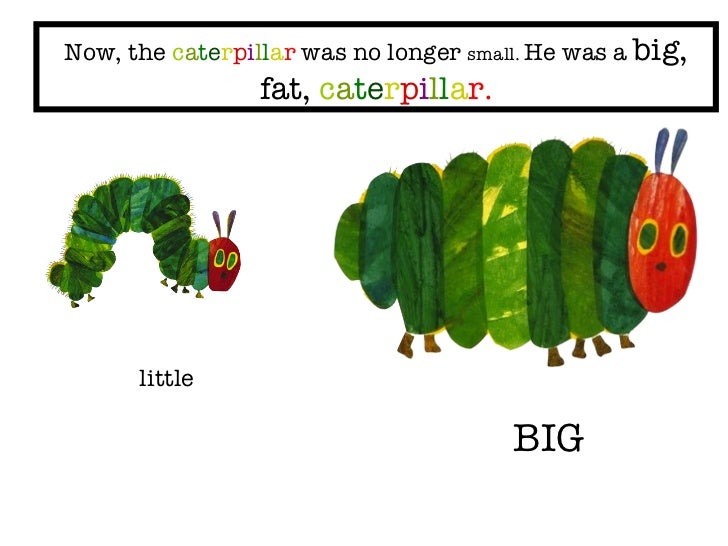The Very Hungry Academic Reader

“Now, the caterpillar was no longer small. He
was a big, fat, caterpillar.”
This line comes from one of my favorite books of all time: The Very Hungry Caterpillar. It’s not
just my favorite because I love to eat food (which I definitely do). It’s not
just my favorite because it’s a childhood classic. It’s my favorite because it’s
difficulty matches my reading abilities.
I’m not a big fan of big words or big sentences. I like to
keep my diction simple, with words like “fat,” “ate,” and “hungry.” However,
the world is not sunshine and roses for me. Sometimes I have to dive into
harder works, such as academic writing; It’s much harder than The Adventures of Captain Underpants and
Diary of a Wimpy Kid in fact!
Reading through Teaching
the Conventions of Academic Discourse, I realized it wouldn’t be quite as
easy to chew through. I read a few pages and began to digest the material, and I
realized it’s not that bad. I’ve never had a taste for academic writing, but I
found Teresa Thonney’s tone to be engaging and able to maintain my focus. This
is due to straight-forwardness of the paper.
I liked the structure of the piece. It is laid out in an easy-to-follow
manner. The six main topics all receive their own section and are clearly
labeled with a bolded heading. The end of each section has a short summary to
re-cap and solidify her points. Each sub-point has its own smaller heading,
which allows for significantly easier readability.
A thought crossed my mind as I was reading this. It went
like, “Hey, I could totally only read the headings and just ignore all the
paragraphs.”
I did not do this.
However, the structure is so clear that you know exactly
what you’re going to be reading before you read through the section. The
section itself exists to support the claim that academic writing does in fact
use the “six standard ‘moves.’” The sections do offer some explanation, but the
meat of them is evidence for her claim that students should learn basic
academic writing principals.
Because we are students instead of college professors, the
main claim of the paper is rather irrelevant to us. We don’t care that we
should be taught because we have no say in what we DO get taught. This makes it
extremely easy for us students to read because we only need to understand what
the six standard “moves” are, not why we should know them.
Essentially, we could ignore half of this paper.
Essentially, we could ignore half of this paper.
This smooth reading is because of the convention “Academic
Writers State the Value of Their Work and Announce the Plan for Their Papers.”
Thonney lays out her claim and quickly announces the plan for the paper, which
is clearly laid out through the whole paper. I attempt to use this convention
often in my writing, as I feel being clear is the most important part of any
paper. No one cares how smart you sound if you’re babbling in a circle with no
clear arguments.


I too would rather read simpler works rather than challenging myself by plowing into more academic pieces. I was intimidated by the title of this article, “Teaching the Conventions of Academic Discourse,” even before I began to read the literature. The title itself is dense, so I was worried that I was going to be overwhelmed by the contents of the article as well. However, similarly to you I was pleased with the layout of the article as it was easy on the eyes as well as the mind. I did not have to decode each paragraph, I knew what information would be found in every paragraph by simply reading and easily comprehending the headers. On top of that, Thonney includes numerous examples which made me recognize how each point she is making is applicable to our writing. As a side note, I really enjoyed reading your blog because you allow your voice to shine through and it is easy to follow.
ReplyDeleteHaha. I did indeed laugh aloud. You're right. You really have no choice in what you are taught or the way you are taught. On the other hand, because you resisted the urge to read only half the paper, you now know why I am teaching the way I am teaching and you know how it will help you down the road.
ReplyDelete